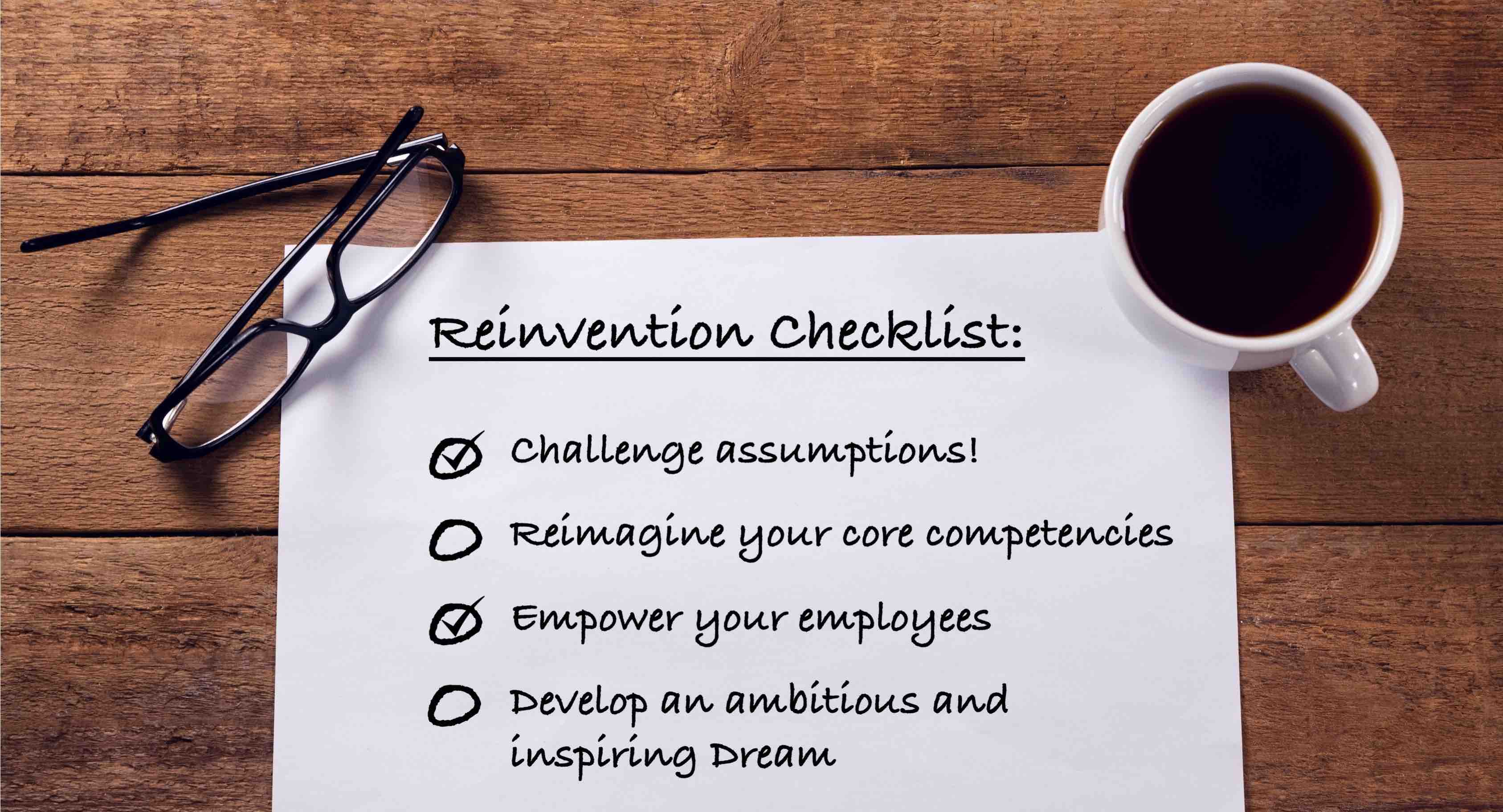By Mikael Trolle (CEO & Co-Founder of IDONEA)
and Tjorven Ludes (Marketing Coordinator of IDONEA)
Content
- Why it is crucial to reinvent a business from a position of strength
- How to identify industry changes and disruption early
- How to approach the reinvention
- What this means for your leadership
What makes the Dreams and Details model different from other leadership models? One of the central elements, which distinguishes it from other models, is the emphasis on reinvention from a position of strength.
Why is it crucial to reinvent a business from a position of strength?
The simple answer is because you do not want your business to strictly follow the usual path of:
1) Founding
2) Growth
3) Stagnation
4) Decline
5) Closure or takeover.
Additionally, due to the drastic increase in the speed of radical changes (innovation, and technological disruption), these 5 phases are accelerated – the lifecycles of companies decrease continuously. However, through a timely commitment to reinvention, a business can avoid decline.
To reinvent while the business is still going well is challenging – but it is a necessary risk to continue success in our times. Only if it is still going well can a company exploit favorable market access, take advantage of a stable financial foundation (e.g., to invest in R&D), and retain, as well as attract, the best employees. While the logic of reinventing from a position of strength is evident, the reality is a lot more complicated. How do you know when it is time for a reinvention? How do you know which direction to take?
How to identify industry changes and disruption early
It is crucial finding the right moment for initiating reinvention. Organizations will have to continually scout for signs of change and disruption in their industry.
Here are some recommendations that will help you:
- Scan your industry. How is your industry doing as a whole? Is it growing or declining? Do you see up and coming competitors with high growth rates? Are they changing the industry? If so, it is time for a reinvention.
- Take a look at the value chain. Evaluating your position in the future value chain of the market is the foundation of analysis. Among the line of activities creating value for the customer, where are you positioned? Is that position sustainable and relevant in the future? Or do you have to reorient to other activities? Once you have identified your position, the share of wallet helps to evaluate the present and future relevance.
- Consider the share of wallet (SOW). We have found the share of wallet to be powerful as an indicator for the current and estimated success of a business. What is increasing market share good for if the market itself is dying? SOW affords you to consider how important your products, services, or brand as a whole are to your customers. A decreasing SOW can, therefore, signal that you are not meeting the expectations, demands, and desires of the customers anymore.
- Scan the periphery. In times of converging industries, this recommendation is gaining importance. Driven by digitalization, the lines between industries are getting blurrier, and industry-overarching solutions become more demanded. This means you have to not only consider your own industry when looking for changes, challenges, and opportunities but also look in adjacent industries. Disruption might originate from there as well.
- Listen! This is probably some of the most common advice. Yet, it is also some of the most challenging and most important. You have to listen to employees, investors, other stakeholders, and, most importantly, your customers. Companies have to become genuinely customer-centric (not just claim to be) and find as well as utilize ways to understand the needs, demands, and desires. On the same note, employees are often closer to the customer than management, so listening to employees becomes more important as well. If you know how to listen correctly, you gain an essential advantage in developing an understanding of trends, demands, changes, and the future.
- Question the status quo. Do not assume that because business is going well, it will continue to do so. Industries and consumer demands are drastically changing with increasing speed. Take a step back and reflect upon the assumptions that your business is based on, consider technological, digital as well as social developments and identify possible ways your company and industry could be affected by these.
How to approach the reinvention
Changes need to be translated to the context of your business – what do they mean for you? Several facets will help you initiate the reinvention and select the new path to take.
- Challenge assumptions. A common mistake by leaders is to consider assumptions that have been relied upon for a long time as fundamental truths. However, when business environments change radically, even the most fundamental assumptions have to be challenged. What has been true yesterday will not necessarily be true tomorrow. Leaders need to reflect, identify the current assumptions that the business relies upon, and see if they still hold up in the future industry.
- Don’t just optimize. Don’t get us wrong – optimizing can be the right path to follow. That is the case when you find yourself in a growing industry, which is relevant to customer demands. However, when the offered service becomes increasingly irrelevant to customers, optimization will not be enough. Such a situation calls for the reinvention of provided services. The art is to perform a dynamic change of seasons – to optimize the existent offering while initiating the reinvention.
- Consider competitors. Take a look around. Who are competitors that enjoy immense growth? What is it that they do, and what do they offer that is different? Most importantly, if these signal fundamental and lasting changes to the industry and of the customer demands, how can you adjust and take advantage of the new business environment?
- Learn from other industries. This connects to the recommendation of scanning the periphery. Don’t just consider your direct competitors within your industry, take also a look at adjacent industries and see if you can learn something from the top players and up-and-comers here. Other industries often offer examples of businesses missing out on opportunities and falling victim to disruption – learn from their mistakes.
- Focus on your core competencies – but reimagine them. A company won’t be able to switch from one field of business to a completely different one, as you need the competences to succeed. Therefore, as a leader, you should think about your obvious core competences, as well as potentially more hidden ones, and consider how you can reimagine them in order to offer services that will be relevant and desirable for the new market environment.

What does that mean for your leadership?
This is where the Dreams and Details leadership model comes to full effect. In a world where outcomes cannot be planned anymore, setting result-oriented targets for your employees may limit potential. The focus has to be on performance, thus developing human potential. If done correctly, the results will follow. To succeed in the new business environment, leaders need to establish a culture of innovation. You have to establish and communicate a dream for the organization to follow. The dream has to give a clear direction for the employees to follow, while it is ambitious enough to inspire every member of your organization, triggering a desire to contribute to fulfilling it.
At the same time, it is up to leaders to identify the crucial details that have to be mastered to succeed in the new business environment. Make sure to develop the skills and capabilities of your employees to excel in these details.
Furthermore, it is vital that employees recognize their individual meaningful roles in the pursuit of the dream. Similarly, collaboration between different fields of expertise has to be established, granting a larger degree of cross-functional capability and collective achievement.
Finally, a leader has to communicate a shared mindset and framework for employees to orient on. This will guide them in everything they do. Once the mindset and framework are engrained within the employees, they are assured in decision processes, which affords them to work more freely and carry more responsibility. Exactly what is needed in a fast-changing environment.
Establishing this leadership in an organization will enable you to unleash human potential to its fullest degree. Following an inspiring dream, something bigger than the individual and the organization, will give meaning to the employees, which reflects in motivation, engagement, and satisfaction. Due to the alignment, employees are empowered and enabled to work more freely and innovatively. At last, this kind of leadership rewards performance over results and thus fosters the development of individual as well as collective capabilities.
This will lay the foundation for an innovative organizational culture, enabling you to repeatedly identify and seize opportunities and reinvent from a position of strength when the seasons in your industry are changing.
Want to find out more? Read or listen to our book and feel free to contact us directly via email!





